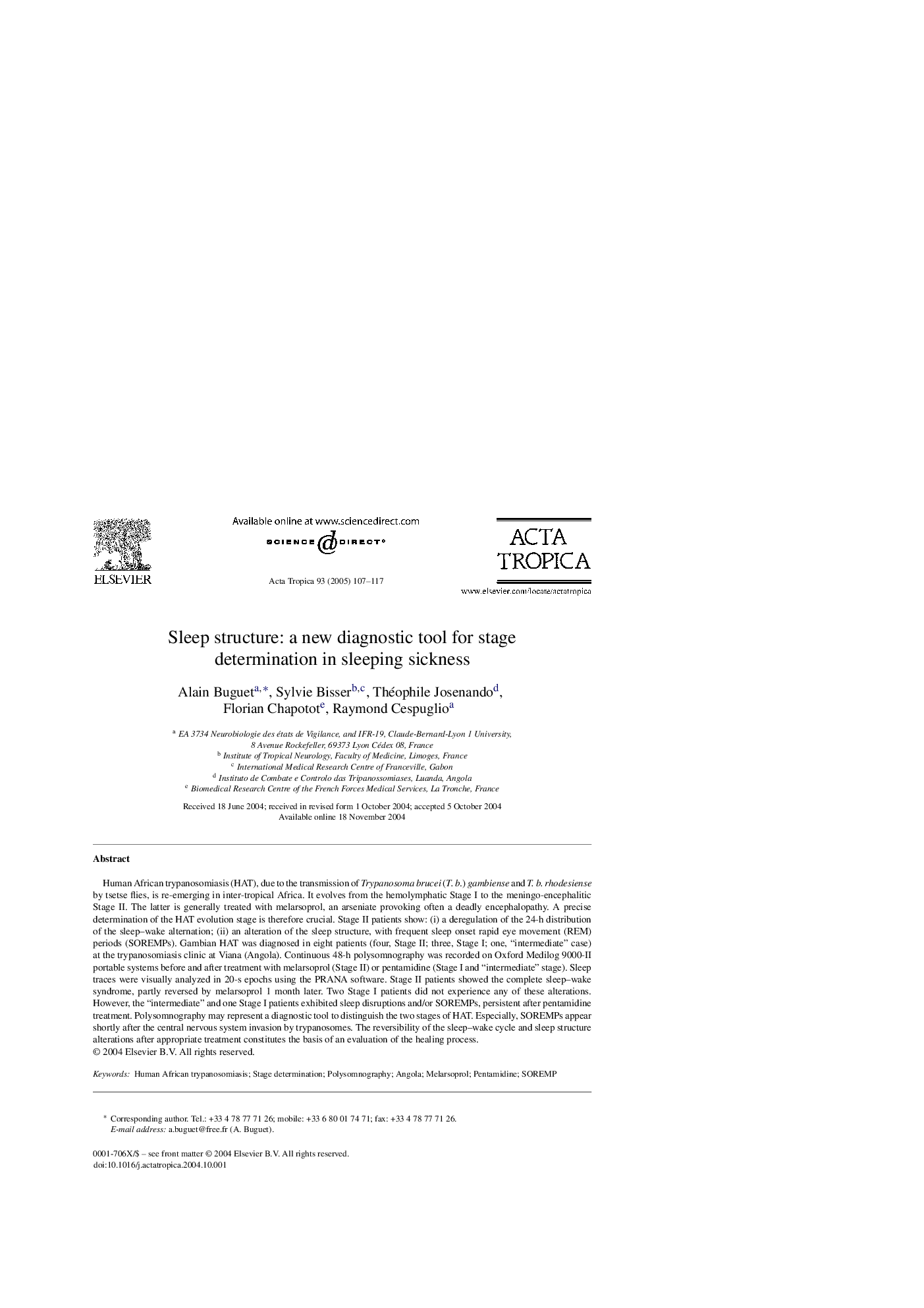| Article ID | Journal | Published Year | Pages | File Type |
|---|---|---|---|---|
| 9274439 | Acta Tropica | 2005 | 11 Pages |
Abstract
Human African trypanosomiasis (HAT), due to the transmission of Trypanosoma brucei (T. b.) gambiense and T. b. rhodesiense by tsetse flies, is re-emerging in inter-tropical Africa. It evolves from the hemolymphatic Stage I to the meningo-encephalitic Stage II. The latter is generally treated with melarsoprol, an arseniate provoking often a deadly encephalopathy. A precise determination of the HAT evolution stage is therefore crucial. Stage II patients show: (i) a deregulation of the 24-h distribution of the sleep-wake alternation; (ii) an alteration of the sleep structure, with frequent sleep onset rapid eye movement (REM) periods (SOREMPs). Gambian HAT was diagnosed in eight patients (four, Stage II; three, Stage I; one, “intermediate” case) at the trypanosomiasis clinic at Viana (Angola). Continuous 48-h polysomnography was recorded on Oxford Medilog 9000-II portable systems before and after treatment with melarsoprol (Stage II) or pentamidine (Stage I and “intermediate” stage). Sleep traces were visually analyzed in 20-s epochs using the PRANA software. Stage II patients showed the complete sleep-wake syndrome, partly reversed by melarsoprol 1 month later. Two Stage I patients did not experience any of these alterations. However, the “intermediate” and one Stage I patients exhibited sleep disruptions and/or SOREMPs, persistent after pentamidine treatment. Polysomnography may represent a diagnostic tool to distinguish the two stages of HAT. Especially, SOREMPs appear shortly after the central nervous system invasion by trypanosomes. The reversibility of the sleep-wake cycle and sleep structure alterations after appropriate treatment constitutes the basis of an evaluation of the healing process.
Keywords
Related Topics
Life Sciences
Immunology and Microbiology
Parasitology
Authors
Alain Buguet, Sylvie Bisser, Théophile Josenando, Florian Chapotot, Raymond Cespuglio,
